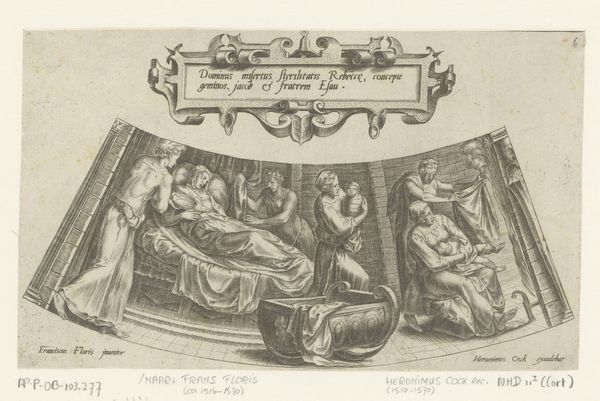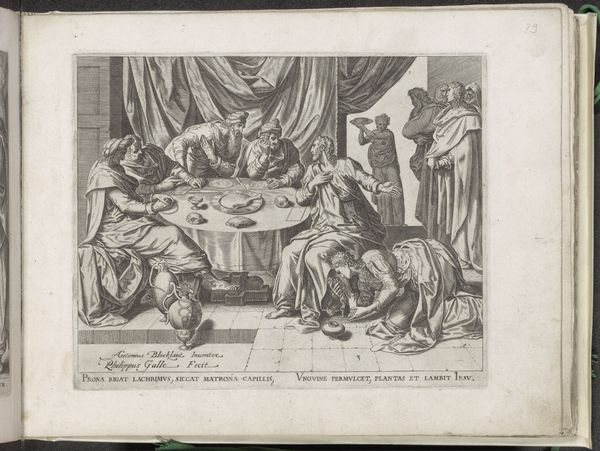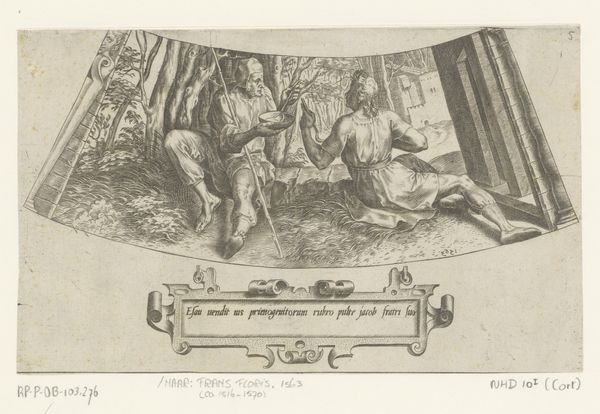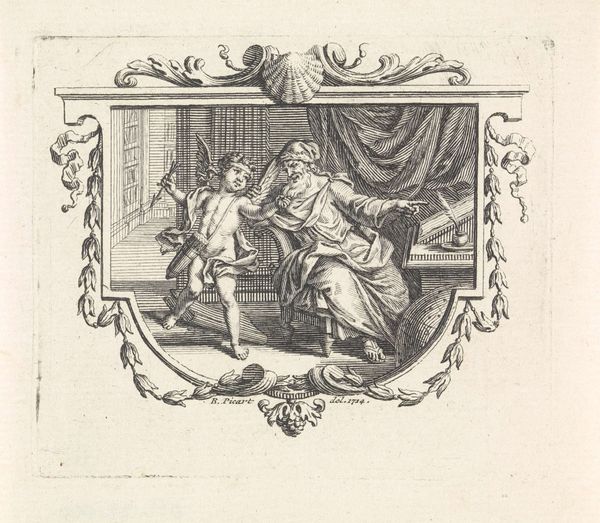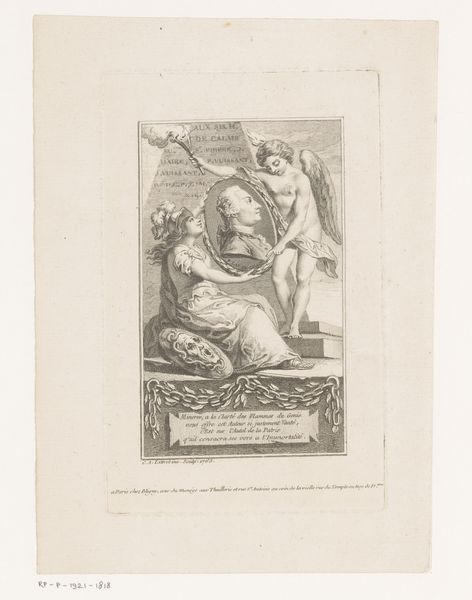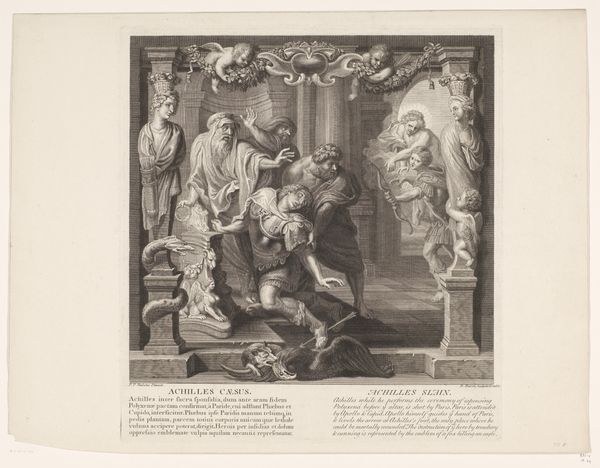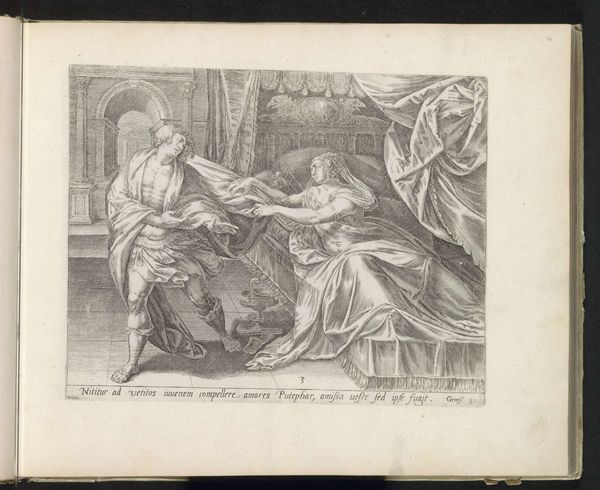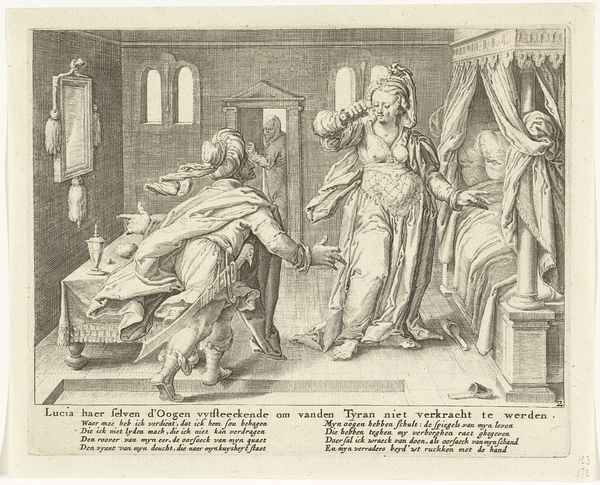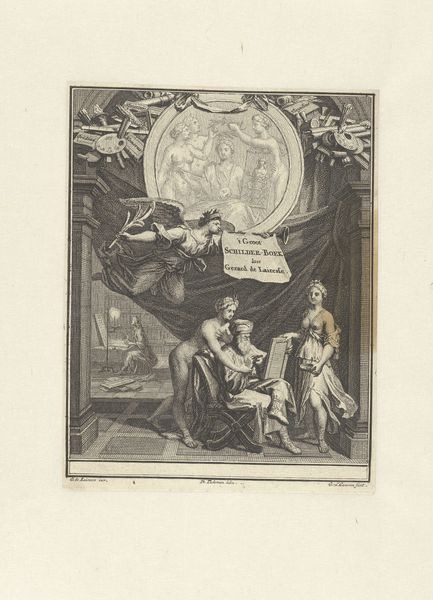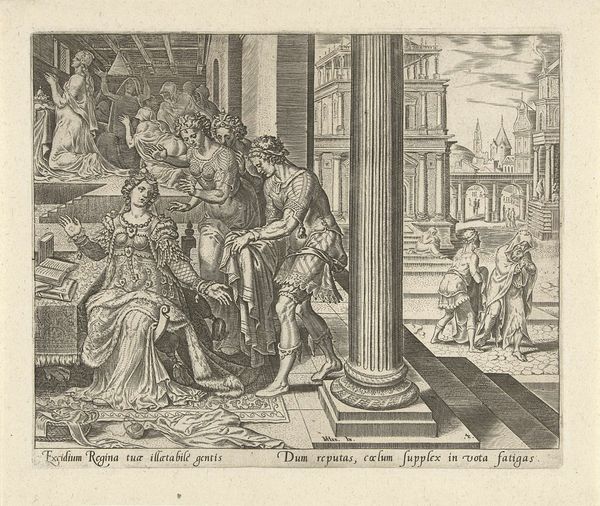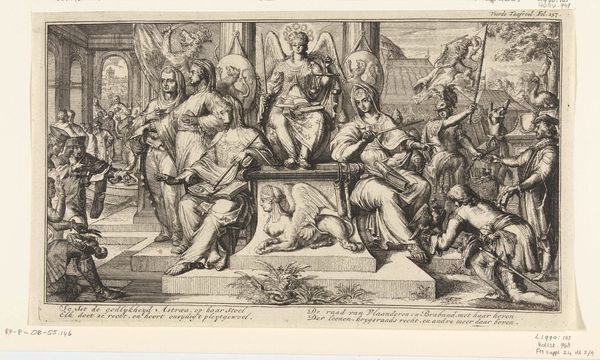
print, engraving
#
portrait
#
narrative-art
# print
#
old engraving style
#
figuration
#
history-painting
#
northern-renaissance
#
engraving
Dimensions: height 135 mm, width 220 mm
Copyright: Rijks Museum: Open Domain
Curator: This is Cornelis Cort’s 1563 engraving after Maerten de Vos's design, depicting “Jacob Receiving Isaac’s Blessing,” based on the biblical narrative. What strikes you most about this particular print? Editor: There's something hauntingly staged about it. The composition, framed almost like a theatrical proscenium arch, gives me an unsettling sense of manipulation… a feeling that suits the subject matter, really, this deception. What I immediately want to understand is the engraving process here, the labor involved, especially for these reproductive prints intended for a wider market. Curator: You know, the use of line is indeed remarkable. It really evokes that High Renaissance influence filtering its way North. The tight hatching and cross-hatching to create shadows give the scene a certain drama, wouldn't you agree? Cort was a master engraver, moving between the workshops of Italy and the Netherlands… Editor: And what I appreciate here is how printmaking democratizes access to imagery. Think about the material conditions: relatively inexpensive paper, the multiplication of images… engraving, by its very nature, creates an aesthetic tied to repeatability, circulation. The paper and ink of the print itself becoming central, don’t you think? How this affects and effects are key for thinking about the dissemination of images across geographic space and social classes. Curator: Absolutely, but beyond the mechanics, for a moment… the emotion captured! The way Jacob kneels, the near-blind Isaac reaching out. Do you sense that tension, that mix of guilt and perhaps even pity? It hints at deeper anxieties regarding legacy, faith… the inheritance of not only land or goods, but blessing itself. Editor: Yes, I see it, but those concerns about dissemination of both aesthetic ideals and social roles seem essential here—paper as a cheap and easily used means for communication of an ideology. A narrative for instruction and control! The social work of visuality, indeed. Curator: I see your point! But there is such a tangible yearning portrayed through a reproducible method here. Perhaps, what intrigues me most is that enduring need to wrestle with existential questions. In essence, Cornelis and Maerten manage to tap into these profound uncertainties, anxieties… with something as ‘simple’ as a reproduced piece of paper. Editor: For me, it is more about wrestling how the reproducibility affects and molds this piece, so much of its artistic force in a web of materiality and accessibility.
Comments
No comments
Be the first to comment and join the conversation on the ultimate creative platform.
